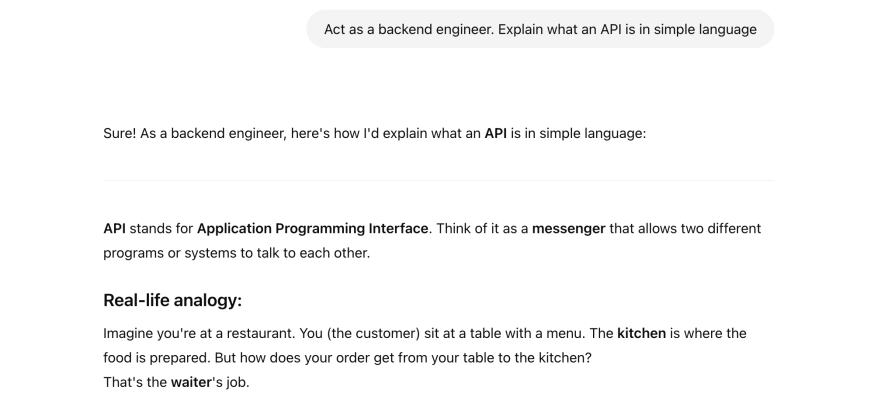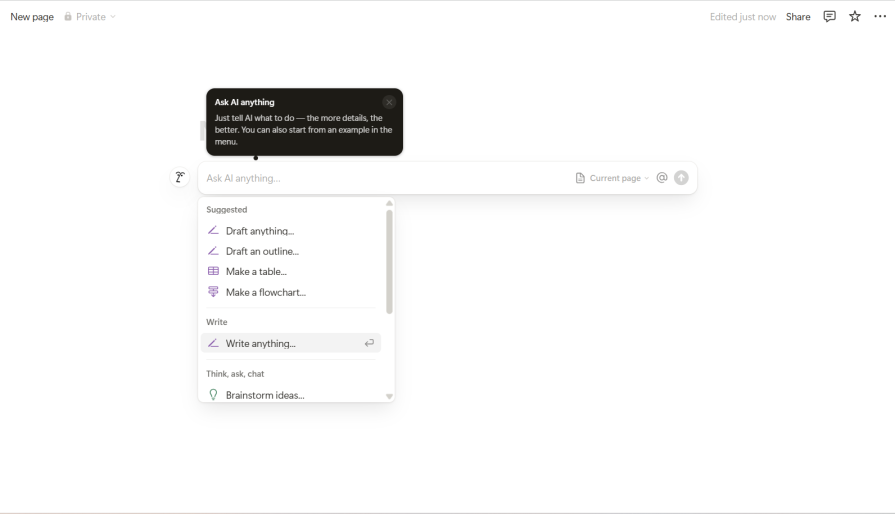“What’re your hard skills as a product manager?” a redditor recently asked in a popular product management sub. Since the question was posed, it’s already received 51 comments and 151 upvotes. This means it’s a topic worth talking about, and considering the emergence of AI tools, working on your hard skills as a PM has become more important than ever.

So in this article, I want to talk about what hard skills PMs should develop, how you can use AI to improve these hard skills, and how these hard skills can make you a better PM. This advice comes from my own experience working as a PM for 10 years now, as well as from some of the best PMs working at top tech companies.
Hard skills, as compared to soft skills, are specific technical abilities that are necessary to excel in a role. Soft skills, on the other hand, are interpersonal or behavioral skills that demonstrate how you work collaboratively with others.
Hard skills are specific to a job, while soft skills can be translated across industries and niches. Also, hard skills are easy to measure, unlike soft skills. The table below shows some examples of hard skills versus soft skills as a PM:
| Product management | |
| Hard skills | Soft skills |
|
|
This section covers the hard skills that every PM should be aware of, as well as how I’m working on becoming better at them.
There’s no prizes for guessing here because this is something you’re probably already doing. ChatGPT, Claude, Perplexity, or Grok — all of these tools are as good as the way you use them. However, they can be great for:
But the quality of the output depends on how good your prompts are. A good prompt is more than one line. It’s not short. It’s structured and includes:
It’s less about the tool that you’re using, and more about knowing what to ask.
Why does it matter?
Prompt engineering can help you:
It can make AI your mentor who can guide you in the right direction. In 2025, the best PMs won’t be the ones who just use AI, they’ll be the ones who know exactly what to ask and how to ask it.
AI tip:
To get better at prompt engineering, practice in loops. Here’s how:
Prompt engineering isn’t a one-prompt conversation but a series of them.
Structured query language is a database language that helps users interact with databases. In the context of PMs, SQL can help:
Back at Zalando, we had a data analyst to do this. While at Placker, which was a relatively small company, I did all the analysis.
Irrespective of whether you have a data team or not, PMs need to learn the basics of SQL. This is something I learned from my ex-manager.
You don’t need to learn it at the level of a data analyst or software engineer, but if you know enough to get the data you want, you’ll win.
Why does it matter?
Understanding SQL gives you:
AI tip:
Use ChatGPT or Claude for pair programming. For example:
This way, you won’t only understand theoretically, but practically as well.
One of the products I worked on at Zalando was completely back-end and based on APIs. That’s when I realized the importance of this.
APIs (application programming interfaces) allow two systems to talk to each other. It could be how the frontend talks to the backend or how your system talks to a system outside of your company (this is related to external integrations). As a product manager, you don’t need to build APIs, but you do need to understand how they work.
API literacy means knowing:
You’re not trying to be an engineer. You’re trying to avoid being the only person in the room who’s confused when engineers say, “We will expose a new endpoint for that next week for you to test.” And this will happen quite frequently.
Why does it matter?
PMs who understand APIs:
Basically, it’ll help you build a better relationship with engineering.
AI tip:
Use ChatGPT to simulate API understanding:

Understanding the why and not only the what will help you deal better with APIs.
Figma is a design tool mainly used by product designers to create wireframes, mockups, and high-fidelity UI prototypes. But considering how easy it is to use, PMs should learn Figma.
For PMs, Figma fluency doesn’t mean being a designer; it means being able to:
This doesn’t mean you’re replacing your designer. Much like learning SQL or API to be able to speak to the engineering team better, learning Figma will help you collaborate with the design team effectively and speak their language.
Why does it matter?
PMs who know their way around Figma:
In my recent experience, being able to open Figma and say “This screen can solve the problem of our users” is far more efficient than writing a paragraph in Notion.
AI tip:
Use Figma AI to explore and learn by doing. It’s very similar to ChatGPT, it’s just specifically for designing prototypes.
Notion, Airtable, and Coda are minimal and simple tools for documentation, planning and collaboration. Most companies still use JIRA or Trello, but these tools are emerging as strong competitors for collaboration with stakeholders.
They’ve become the go-to platforms for:
Why does it matter?
Mastering these tools allows PMs to:
These tools are also easy to use and flexible catering to a wide variety of PM needs.
AI tip:
Use Notion AI to build better docs, faster.
Here’s how to learn while doing:

A/B testing is the practice of testing two variations of a feature to determine which one performs better against a defined metric. These could be anything ranging from conversion rate, click-through, retention, pageviews, etc.
In practice, this means:
Why does it matter?
PMs who know how to run experiments:
AI tip:
Use Claude or ChatGPT to draft experiment plans. Example:
AB testing is also one of the most required skills that’s tested during a PM job.
Analytics tools like Mixpanel, Amplitude, and Google Analytics 4 (GA4) help you understand what users are doing inside the product. Tools like Excel and Google Sheets can also help you to analyze but they are more manual than Mixpanel, Amplitude and Google Analytics.
Excel and Google sheets focus more on the analysis and less on capturing the data, while the other three tools can do both. These tools allow you to:
These can help you in data analysis and help uncover gaps that would usually require a data analyst.
Why does it matter?
Analytical thinking is one of the core skills of a product manager. It helps to:
AI tip:
Use ChatGPT or Claude to simulate analytical thinking. Here’s an example:

Learning analytics is about asking better questions and tools like ChatGPT and Claude can accelerate your thinking.
Data storytelling is the ability to translate raw data into clear, compelling narratives that drive decisions. This is particularly helpful when you’re sharing complex cases with different stakeholders such as higher management, engineering, design, etc. It’s all about:
This skill lives at the intersection of product sense, analytics, and communication.
Why does it matter?
PMs talk to different stakeholders regularly and it’s important to be able to present complex information in an easy to understand way. Data storytelling helps to:
As a PM, it’s our job to bring clarity to confusion via data storytelling.
AI tip:
Use AI to transform raw data into a structured narrative.
Here’s how:
You can also use tools like Beautiful.ai or Gamma to turn AI-structured narratives into clean slides instantly.
Sprint planning is the process of structuring and aligning work for short, focused cycles. Back at Zalando we had two weeks but it can also be in one week increments. While it’s often seen as a scrum ceremony, it’s really a core execution muscle for any PM.
Effective sprint planning involves:
Why does it matter?
PMs who can plan and run tight sprints:
AI tip:
Use ChatGPT to plan better and faster.
Here’s how:
A lot of people think AI will remove PMs. But AI will only remove the PMs who don’t level up their hard and soft skills with AI. Considering the ease of the use of these tools, it’s now a choice to learn more and be better or remain stagnant. I recommend making a sheet of your strong and weak hard skills and creating a plan to tackle the weaker ones. That’s how you will win as a PM in 2025.
Featured image source: IconScout

LogRocket identifies friction points in the user experience so you can make informed decisions about product and design changes that must happen to hit your goals.
With LogRocket, you can understand the scope of the issues affecting your product and prioritize the changes that need to be made. LogRocket simplifies workflows by allowing Engineering, Product, UX, and Design teams to work from the same data as you, eliminating any confusion about what needs to be done.
Get your teams on the same page — try LogRocket today.

Stop letting unreliable data block features. Treat data as inventory to track quality, ownership, and ship with confidence.

Learn why slide decks slow teams down and explore better tools like whiteboards, PRDs, and prototypes to improve collaboration and alignment.

AI PM roles are evolving fast. Learn the five types of AI PMs, the skills they need, and how they shape AI products across industries.

Learn how you can use AI agents to automate workflows, boost productivity, and choose the right tools while avoiding common pitfalls.